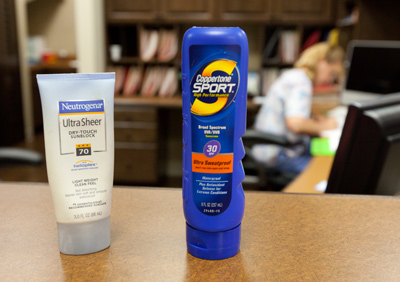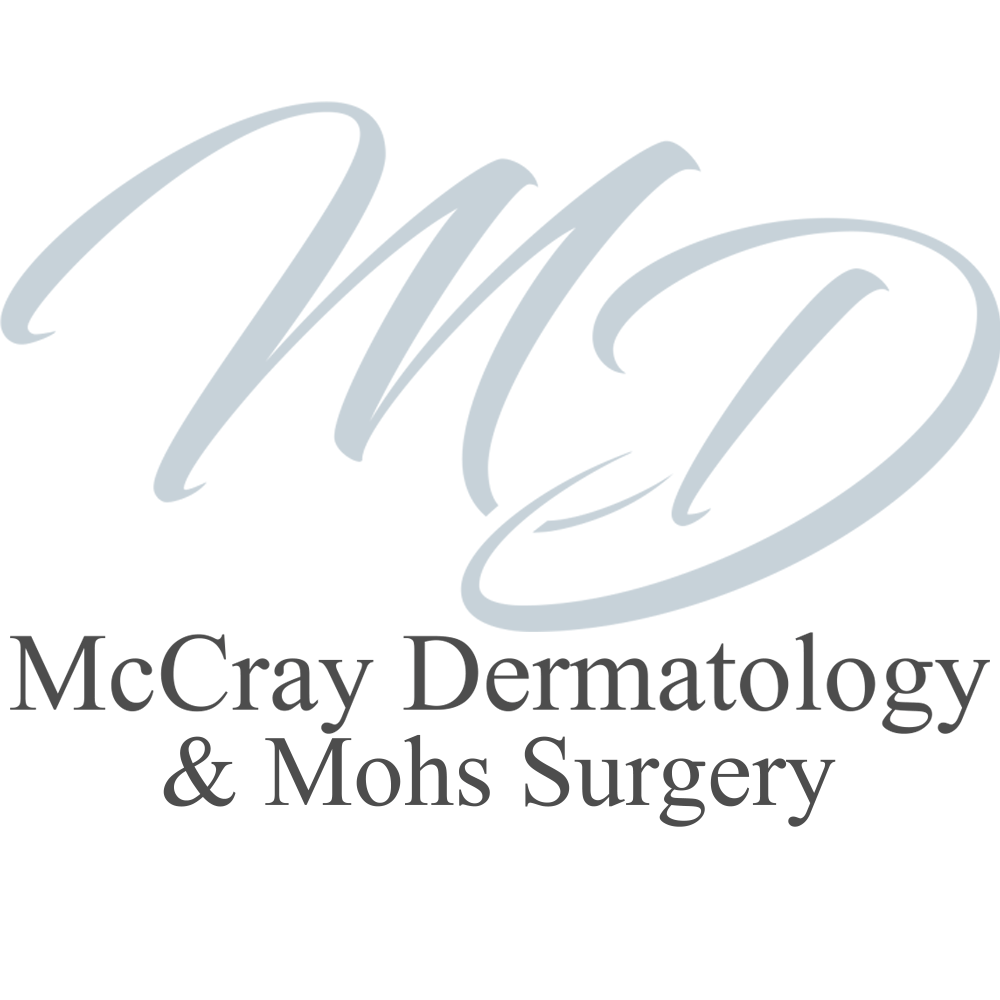Skin Cancer
McCray Dermatology specializes in the diagnosis and treatment of skin cancer. Below is a general overview of the different types of skin cancer.
ACTINIC KERATOSIS
Pre-cancer lesions (Actinic Keratosis) are discrete, scaling, rough lesions that occur on areas of chronic sun damage. These occur frequently in fair skin individuals secondary to prolonged and repeated sun exposure. Common locations include the ears, face, scalp and the upper extremities. Actinic Keratosis are pre-cancerous because a small number of them may progress to becoming Squamous Cell Carcinomas. Thus, treating them is very important. Treatment modalities include freezing with liquid nitrogen, topical creams like Aldara, Solarze, Efudex and Carac.
What is an Actinic Keratosis (Pre-cancerous lesions)?
Actinic Keratosis are pre-cancerous lesions that must be treated in order to prevent them from progressing to skin cancer. On clinical examination, they present as small rough areas on a background of photodamage. Clinically, the patient can see them and also feel the rough areas. These rough areas are representation of actinic keratoses.
How to treat Pre-cancerous lesions (Actinic Keratosis)?
McCray Dermatology treats these precancerous lesions in numerous ways. Classically, liquid nitrogen has been used. Typically, these lesions are spayed upon for about 5 to 10 seconds and then thawed. This process could be repeated multiple times. The patient will come back in 2 to 4 weeks and the same procedure will be repeated again. If the lesions do not disappear after several sessions of freezing with liquid nitrogen, then a biopsy may be warranted to determine that these lesions have not progressed to become a Squamous Cell skin cancer.
CARAC
Other treatment modalities include Carac or Efudex which has classically been used to treat areas of sun damage as well as precancerous lesions. It is typically applied once a day for 2 weeks. The areas of treatment will become red, scaly, rough, and sometimes even tender. It is very important to wear sunscreen during the day. At McCray Dermatology we typically prescribe CARAC during the wintertime when the sun’s rays are less severe. There are other creams that are similar to CARAC—– Efudex Aldara, both used in the same way as CARAC. After one finishes with the course of CARAC, which typically takes about 2 weeks, the redness will slowly resolve itself over the next few weeks. The skin will eventually be less rough and scaly. Also some of the brown sunspot areas may go away. In some cases, the patients may look about 5 to 10 years younger depending upon the reactions of the CARAC cream.
BASAL CELL CARCINOMA
Basal Cell Carcinoma is a malignant tumor that occurs secondary to chronic sun exposure. It is the most common type of skin cancer, more common than Squamous Cell Carcinoma and Melanoma . It has various clinical presentations but the most common is a pearly red lesion that tends to bleed and scab over. It is most common in white individuals with a history of exposure to the sun. It tends to be locally aggressive and destructive, but metastasis is rare. When it occurs on the face, especially around the eyes and nose, it can invade deeply and cause extensive destruction. It is clinically treated with surgery. MOHS Surgery is used for Basal Cell Carcinomas on the face, neck and scalp.
SQUAMOUS CELL CARCINOMA
Squamous Cell is a malignant tumor that arises from the upper layers of the skin (epidermis) and is mainly due to chronic sun exposure. It is most common in white skin individuals mainly older than 50 years of age. Actinic keratosis, also known as a pre-cancerous lesion, may progress to Squamous Cell Carcinoma. In healthy individuals, the rate of metastasis is low however not impossible. Patients that are immunosuppressed or on immunosuppressing medications may have an increased incidence of Squamous Cell Carcinoma. Common areas include face, including tips of ears, scalp, upper extremities, trunk and shins (particularly in females). They clinically present as thick scaling lesions. They may be eroded or ulcerated and may bleed. A subset of Squamous Cell Carcinoma, known as Keratoacanthoma, may develop very quickly in a matter of 2 to 3 weeks. Squamous Cell Carcinomas must be treated early and appropriately in order to prevent the possible risk of metastasis.
MELANOMA
Melanoma is the most lethal type of skin cancer. Melanoma mainly affects middle-aged and young individuals, particularly fair skin types. It is the second most common malignancy in males between the ages of 30 to 49 and the fourth most common malignancy in males between the ages of 50 to 59. About thirty percent of melanomas arise from prior moles while seventy percent of melanomas arise in normal skin and not from pre-existing moles. Based upon the 2011 American Cancer Society statistics, there were 123,840 new cases of melanomas and 8,790 deaths. This means that 19 Americans die of melanoma every day, which is almost one person per hour. Melanoma is increased in patients with a family history of melanoma, history of atypical (dysplastic) moles, numerous moles (greater than 50), red hair individuals, individuals with fair skin types and history of several sunburns. The ABCs of skin cancer is a mnemonic device that has been introduced to make people aware of the danger signs of melanomas. Please contact our office for more information. Routine skin examination is important every 6 to 12 months, depending on family and personal history. Dr. McCray and Dr. Chow perform a comprehensive thorough skin examination checking every inch of the body using the latest magnifiers and dermoscopic devices that allow for better visualization, identification and detection of abnormal moles. We vigorously encourage all patients to perform regular ‘self-exams’ and alert our office in the case of any abnormal skin conditions.
Proper sunblock is important in skin care

Store shelves overflow with countless brands of sunscreen. What is the BEST sunscreen for YOU?
What should you look for on the label?
Laura Stevenson-P A and Dr. McCray gives us the lowdown.
Office Hours
Both McCray Dermatology offices are open Monday through Friday.
Please call for hours because they are subject to change.
Valencia (661) 254-7200 or
Palmdale (661) 947-3700

